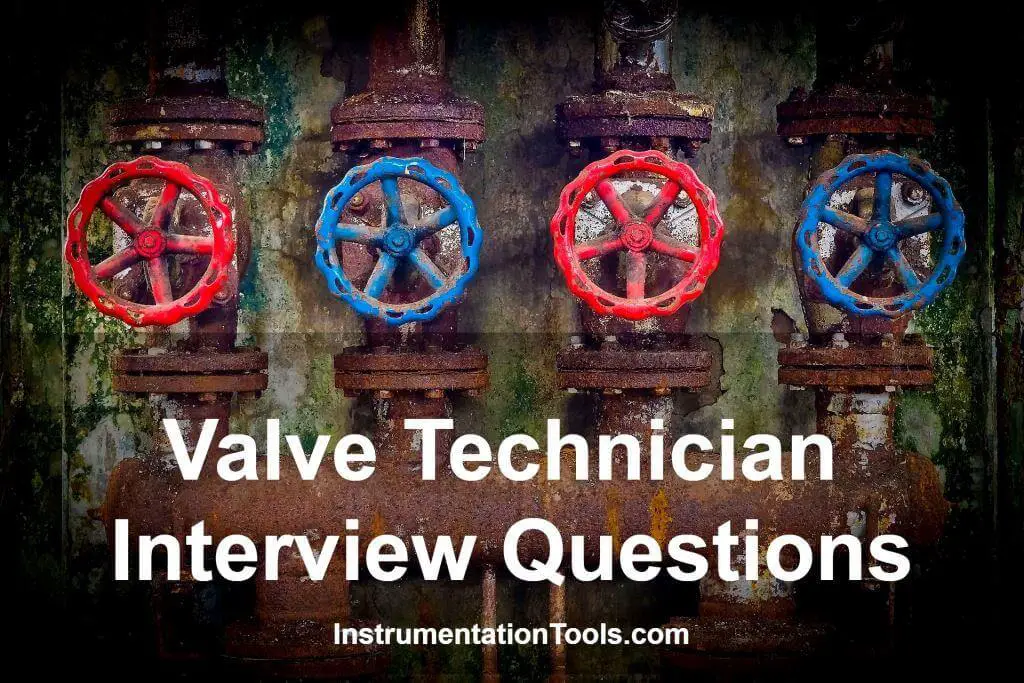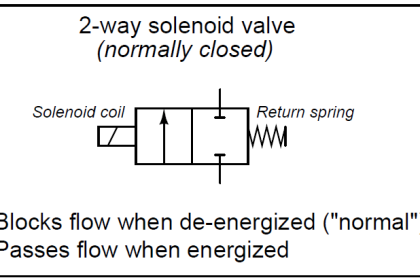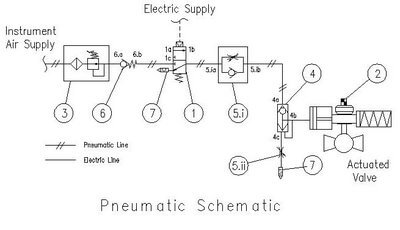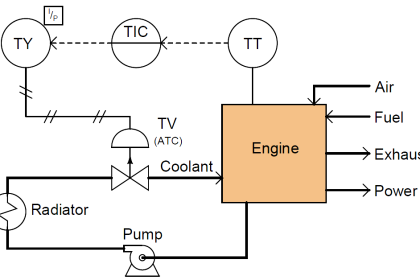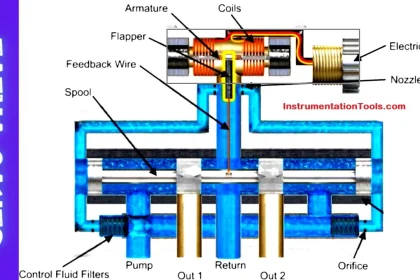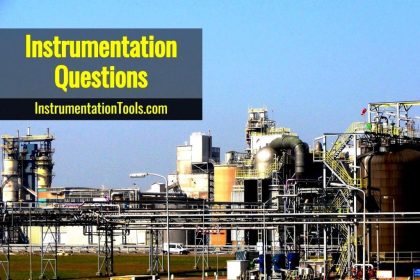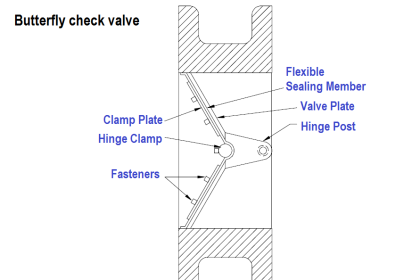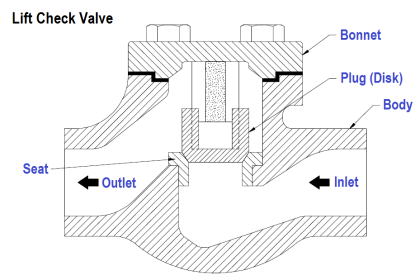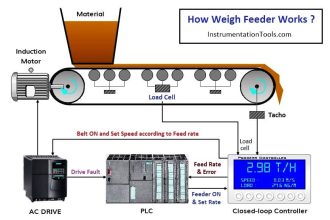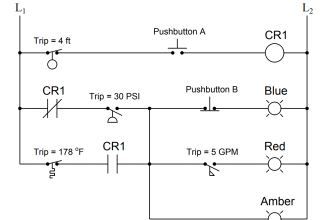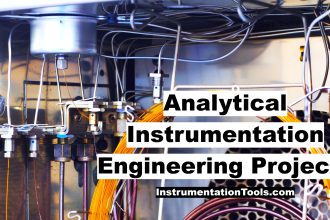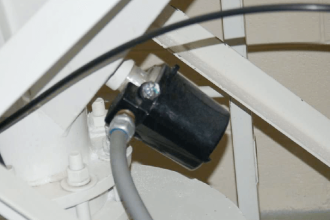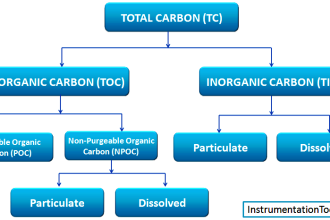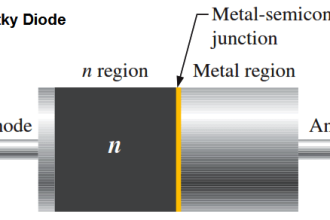Questions & Answers on Valves , Important Interview Questions on Control Valves, Valve Technician Interview Questions, Questions of Valves.
Valve Technician Interview Questions
Types of Leakage
There are two types of leakage from a valve, namely; fugitive emissions from the valve to atmosphere, and leakage through the valve but contained within the piping system.
Fugitive emissions can both be detrimental to the environment and a potential safety hazard. Valves are considered to be the major contributors to fugitive emission losses.
Leakage through the valve can also be a safety hazard, and can be detrimental to the process.
Reasons that Valves Leak
Common causes of valve leakage include:
- Valve is not fully closed. This can be due to various reasons, including;
- Valve seat is prevented from closing fully due to dirt, rust, or line debris
- Insufficient actuator travel
- The seat is damaged, e.g. scored
- The seal is damaged
Standards for Acceptable Rates of Valve Leakage
There are many standards for leakage rates e.g. DIN EN 917 covers Thermoplastics valves, BS 6364 covers cryogenic valves, however the three standards used most in the oil and gas, and petrochemical industry are API 598, ANSI FCI 70-2 and MSS-SP-61.
What is a ball valve?
Ball valves, as the name implies, are stop valves that use a ball to stop or start the flow of fluid. The ball performs the same function as the disk in the globe valve.
When the valve handle is operated to open the valve, the ball rotates to a point where the hole through the ball is in line with the valve body inlet and outlet.
When the valve is shut, which requires only a 90 degree rotation of the handwheel for most valves, the ball is rotated so the hole is perpendicular to the flow openings of the valve body, and flow is stopped.
What is a check valve?
Check valves are used to allow fluid in system in only one direction. They are operated by the flow fluid in piping.
A check valve may be the swing type, lift type, or ball type.
Can butterfly valves be used for flow control or throttling?
This is generally impractical due to the very unsteady nature of flow through a partially-opened butterfly. Variations of the basic butterfly design do not significantly improve this characteristic.
The butterfly valve has a body, a resilient seat, a butterfly disk, a stem, packing, a notched positioning plate, and a handle.
To open or close a butterfly valve turn the handle only one quarter turn to rotate the disk 90 degrees. Some larger butterfly valves may have a handwheel that operates through a gearing arrangement to operate the valve.
This method is used especially where space limitation prevents the use of a long handle.
Also Read: Basics of Valves Questions & Answers
Where can we use gate valves?
Gate valves are used when a straight-line flow of fluid and minimum restriction is desired.
Gate valves are so named because the part that either stops or allows flow through the valve acts somewhat like the opening or closing of a gate and is called, appropriately, the gate.
The gate is usually wedge shaped. When the valve is wide open, the gate is fully drawn up into the valve, leaving an opening for flow through the valve the same size as the pipe in which the valve is installed. Therefore, there is little pressure drop or flow restriction through the valve.
A gate valve is usually used as a shut-off valve, gate valves are not suitable for throttling purposes since the control of flow would be difficult due to valve design and since flow of fluid slapping against a partially open gate can cause extensive damage to the valve.
Gate valves are classified as either RISINGSTEM or NONRISINGSTEM valves.
On the nonrising-stem gate valve the stem is threaded on the lower end into the gate. As the hand wheel on the stem is rotated, the gate travels up or down the stem on the threads, while the stem remains vertically stationary.
The rising-stem gate valve has the stem attached to the gate; the gate and stem rise and lower together as the valve is operated.
What is a globe valve?
A Globe Valve is a type of valve for regulating flow in a pipeline, consisting of a movable disk-type element and a stationary ring seat in a globular (spherical) body.
Globe valves are named for their spherical body shape with the two halves of the body being separated by an internal baffle. This has an opening that forms a seat on to which the movable disc shut the valve.
Globe valves are used for applications require throttling and frequent operation.
What valves are stop valves?
Stop valves are used to shut off or, in some cases, partially shut off the flow of fluid.
Stop valves are controlled by the movement of the valve stem.
Stop valves can be divided into four general categories: globe, gate, butterfly, and ball valves.
Needle valves may also be considered stop valves.
What valve types are available on the market?
Although many different types of valves are used to control the flow of fluids, the basic valve types can be divided into two general groups: stop valves and check valves.
Besides the basic types of valves, many special valves, which cannot really be classified as either stop or check valves, are found in the engineering spaces.
Many of these valves serve to control the pressure of fluids and are known as pressure-control valves.
What is a Three-Way Valve?
Three-Way valves has three ports. Depending on the particular valve, all three port may be open, two ports may be open, or all ports may be closed.
Explain the difference between normally closed valve and normally open valve?
Normally Closed:
Valves stays closed in de-energized state; opens when energized.
Normally Open:
Valves stays open in de-energized state; closes when energized.
Should you choose Forged or Cast valves?
It depends on the application.Many valve applications in pharmaceutical and biotechnology manufacturing require forged valves because of the low ferrite content and better surface finish.
Cast valves can sometimes have surface imperfections where bacteria can grow and cause contamination.
Difference between a pressure regulator and a flow regulator?
A pressure regulator valve (PRV) controls pressure regardless of variations in flow. The FRC is the exact opposite of a PRV. It will control the flow rate regardless of pressure variations.
What is the function of a directional control valve?
A directional control valve is the extend and retract control for your hydraulic cylinders. It provides a flow path from the pump to the cylinders and a return path from the cylinders to the fluid reservoir
What are the benefits of fused epoxy coating?
This coating is applied under rigorous preparation and application standards. It is non-porous, improving the flow co-efficiency of the valve and effectively sealing the casting from interaction with the controlled liquid.
The coating also protects the valve from environmental attack. The finish prevents mineral buildup and rust, simplifies maintenance, and prolongs the life of the valve.
What is the “CV” factor?
The pressure loss for fixed orifice items are identified by the “CV” Factor. The symbol “CV” is defined as “a valve constant, characteristic of each type and size of valve”.
Once the CV factor is established for a particular valve, the pressure loss through that valve or fitting can be calculated by simply knowing the specific gravity of the fluid running through the pipe, the quantity of flow (in gallons per minute) and the CV factor of the valve.
Why are the seat and disc guide so critical?
They are the two most critical components in the flow path of the controlled liquid and are provided in Stainless Steel as a standard.
This allows the valve to handle those tough applications where excessive velocity, volatile water conditions and even minor cavitation are present.
Where should strainers be located in pipework systems?
Strainers are installed to protect items of plant and to help ensure system efficiency by keeping heat emitters (terminal units, i.e. fan coil units etc.) free from particle build-up within them.
When used to protect items of plant (boilers / chillers / pumps etc.) strainers should be installed upstream of the item to ensure that larger particles contained in the flowing water do not enter and damage the item of plant.
Strainers can also be installed at strategic places, i.e. branches or in each terminal sub-circuit, throughout the system to ensure that smaller particles contained within the flowing water do not pass into the terminal units affecting their efficiency.
What is the maximum pressure that I can test my system at?
Pressure testing has implications on all of the individual system components, i.e. pipes, fittings, valves, coil etc., therefore the pressure rating of all the components needs to be considered when deciding on a suitable test pressure.
There are two pressure tests relating to valves:
System Pressure Test – to test integrity of the finished assembled system, i.e. ability of the completed assembly of individual components to withstand pressure.
Valve shut-off Pressure Test – to test the ability of a valve, typically an Isolation Valve, to close against a pressure.
Manufacture valves to allow system pressure testing to be carried out at 1.5 times maximum working pressure of the valve, i.e. for PN16 valves the test pressure can be 16 x 1.5 = 24 bar. Note that all valves must be in an open position.
The shut-off pressure test can be carried out at 1.1 time maximum working pressure.
What is the difference between a FODRV and a VODRV?
FODRV is the abbreviated term for Fixed Orifice Double Regulating Valves and VODRV for Variable Orifice Double Regulating Valves.
The term ‘Orifice’ refers to the opening in the valve that the water flows through.
FODRV:
With a FODRV the ‘orifice’ that creates the measured pressure drop, is an actual opening of a fixed size, hence the term ‘Fixed orifice’. Fixed Orifice Valves have a single value for the flow coefficient Kv. For the FODRV this value is usually referred to as Kvs.
VODRV:
With the VODRV the ‘orifice’ that creates the pressure drop is the seat / disc assembly within the valve. As the gap between the seat and disc is different for different handwheel positions, the flow coefficient Kv is changeable depending on the handwheel position, hence the term ‘Variable Orifice’.
Because the FODRV does not have a changeable Kvs value, the accuracy remains at ±5% irrespective of the handwheel position, whereas, for the VODRV, which has a variable Kv value, the accuracy is ±5% when fully open but reduces to approximately ±18% when the valve is closed to its minimum set position, i.e. 25% open (CIBSE recommendation).
Commissioning Engineers find it easier to work with FODRV because design pressure drops can be calculated before attending site, whereas, with the VODRV the pressure drop must be re-calculated during the commissioning process each time the handwheel position is changed.
How many diameters are required before and after Commissioning Valves (CVs) for accurate flow measurement?
Best practice is to have 10 clear straight diameters of pipework of the same nominal diameter before (upstream) and 5 clear straight diameters after the CV.
The diameters before the CV are important for flow measurement accuracy and the diameters after the CV maximise system pressure recovery.
When installed with 10 and 5 diameters, other pipework components, i.e. bends/ control valves etc., can be ignored and have no effect on accuracy or system pressure recovery.
Where it is not possible to install with 10 and 5 diameters, they can be decreased to 5 and 3 diameters with only slight reduction in accuracy.
However, where the upstream diameters are decreased to 5 clear straight diameters, it becomes important to consider components that are installed within 5 diameters upstream of the CV.
For example, control valves (with convoluted water passage through them) would have a greater impact on accuracy than a concentric reducer or an elbow which would have a greater impact than a slow bend.
Where the downstream diameters are decreased to 3, almost all the system pressure has been recovered so the change from 5 to 3 has little impact.
